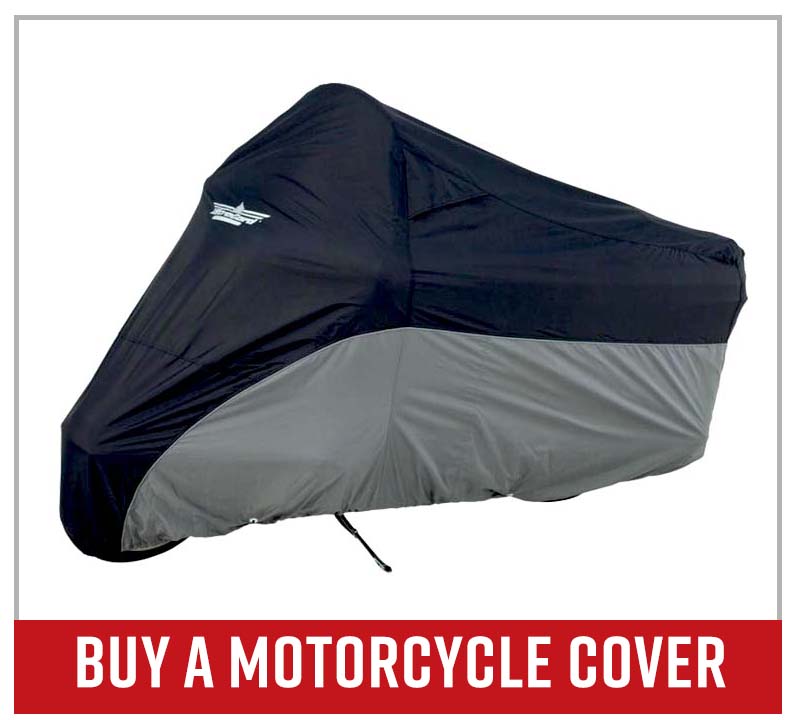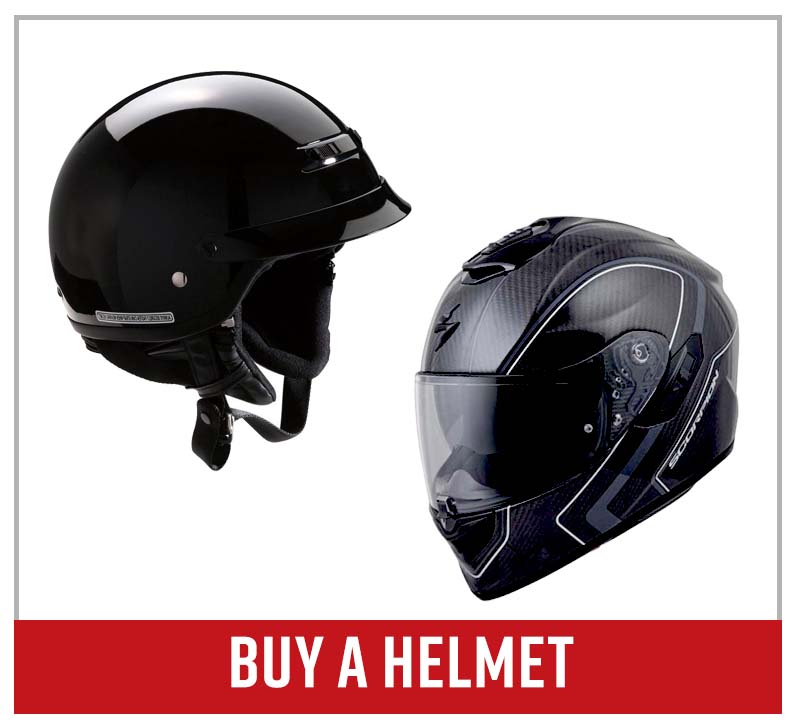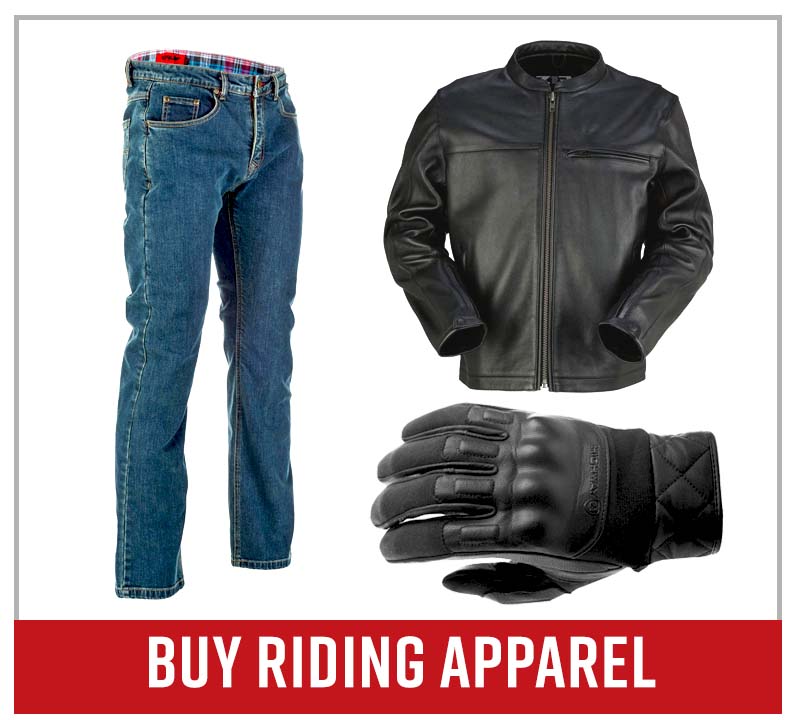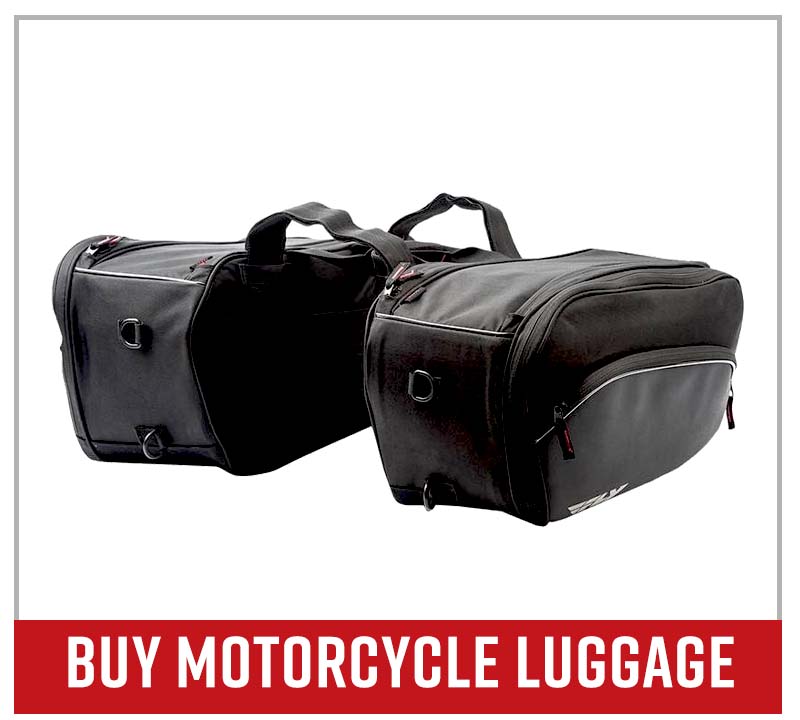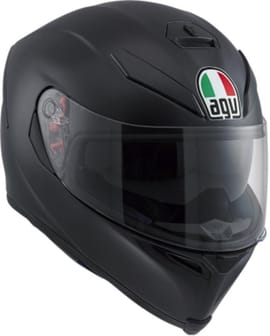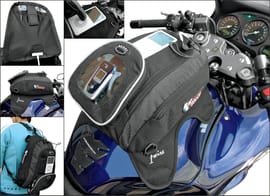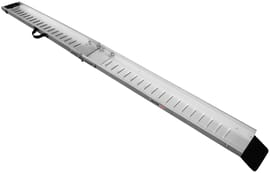Beginner’s Guide to Choosing Your First Motorcycle
When you’re new to the world of motorcycles, picking out your first bike can be overwhelming. How do you choose? Motorcycles come in large varieties of types, sizes, models, colors, engine capabilities and so on.
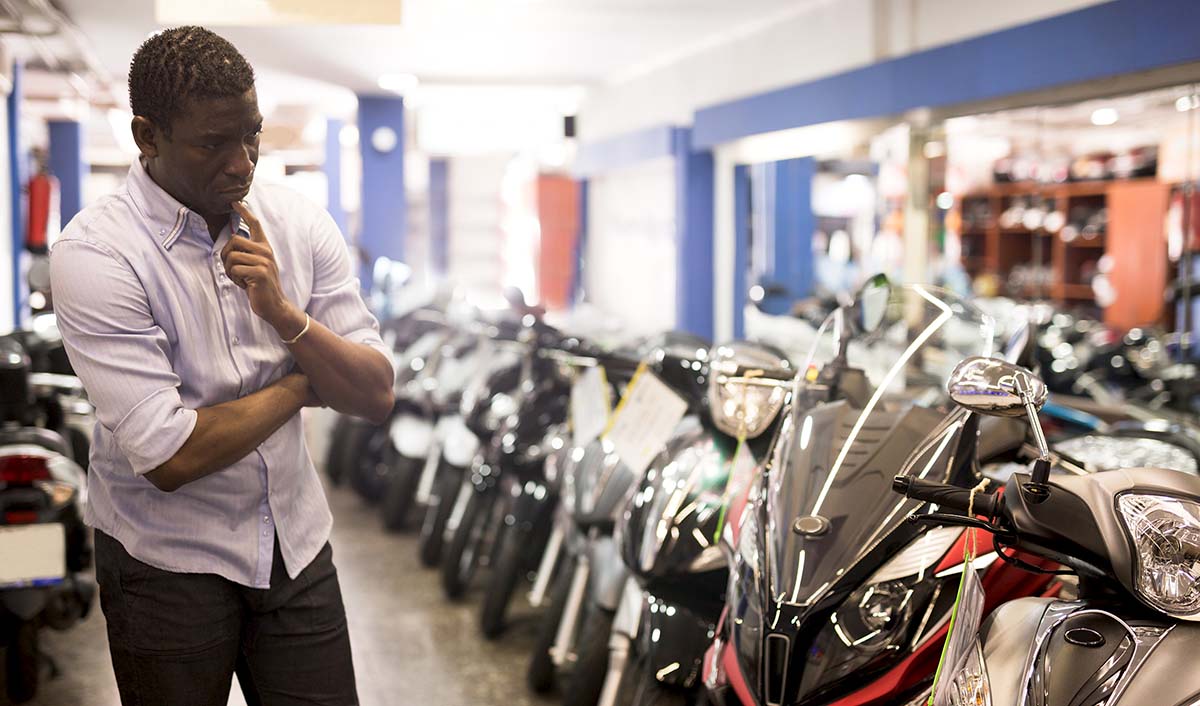
If you're a newbie (or “noob”) and have no idea what motorcycle might be best to start out with, we’re here to help you out. This article is not meant to tell you which motorcycle is right or wrong, but rather just provide a basic guide to what’s out there as far as things to look out for. Keep in mind that the initial style of riding you have in mind (cruising, touring, offroad, etc.) might change once you’ve improved your skills, so it’s best to start out with something basic until you’ve mastered riding a motorcycle.
Things to Look For in a Beginner Motorcycle
As a beginner, start with a basic, “bare-bones” motorcycle. What’s known as a standard or “naked” motorcycle is a good place to start. These basic bikes are ideal for learning fundamental skills and developing your riding prowess. Once you graduate as a rider, you can move onto something more advanced, powerful and/or sophisticated.
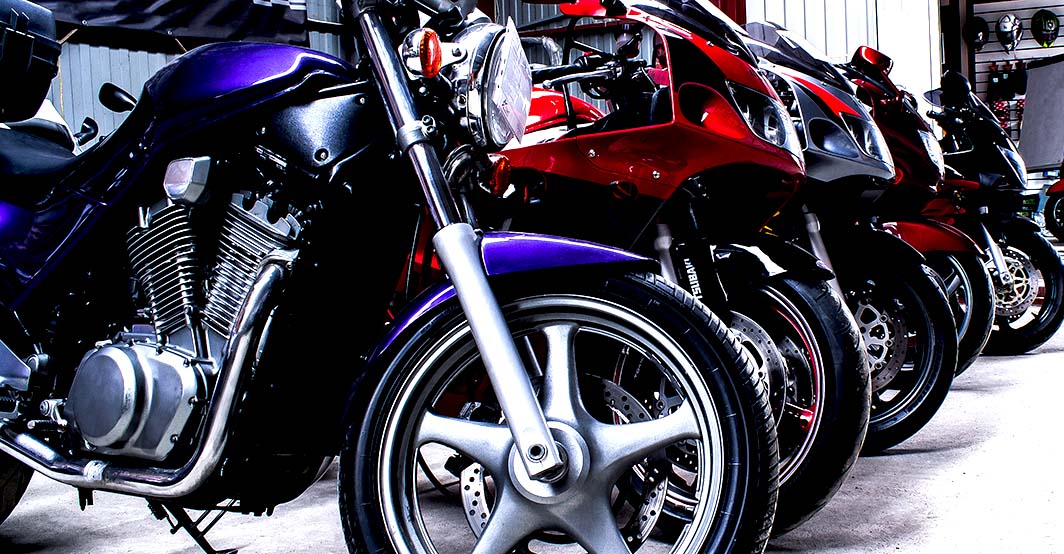
Developing your skills on a standard motorcycle will help you discover what kind of riding you might get into later, such as cruising or sport. But before you do any of that, plan on getting motorcycle training and a Class M license. The Motorcycle Safety Foundation training course is a good place to start, as it teaches the fundamentals of motorcycle riding techniques and safety.

Comfort
Riding a motorcycle can be a jarring experience, so you’ll want a machine that you’ll feel comfortable riding, especially when it comes to posture and handling. If you’re a new rider, your first bike should allow you to build confidence, and provide body positioning that won’t feel painful and turn you off to riding. When shopping for a beginner motorcycle, don’t feel awkward sitting on a bike for 10-20 minutes at a dealership to feel it out. Take your time and make sure you choose a bike that feels right.
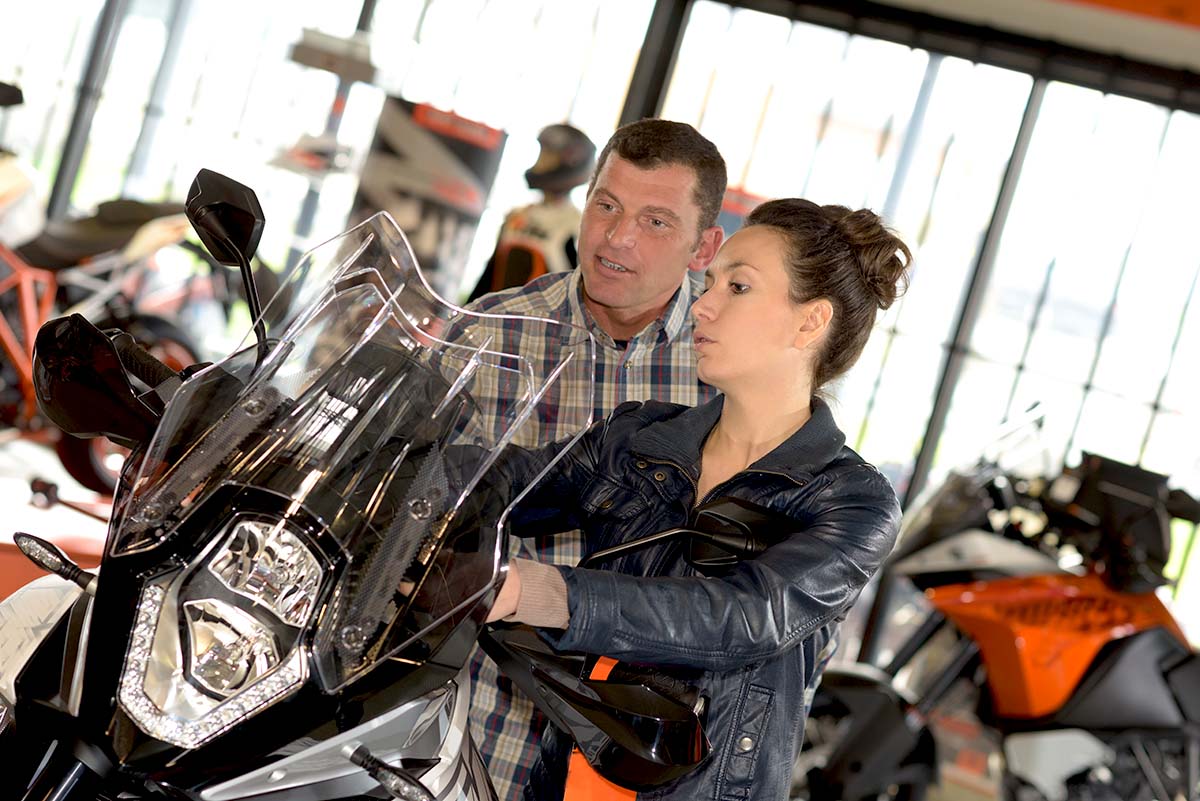
Windscreen
Look for a bike with a windshield or fairing on the front to shield you from weather and debris such as flying rocks and bugs. Also, battling against the wind as you ride can wear you out quickly, so a windshield contributes to your riding comfort and safety.
Seat & Handlebar Height
Seat height is also crucial to your riding comfort. If the seat is too high for your body, you’ll have to tiptoe or lean the motorcycle to be able to ride, which is not helpful for newbies trying to master their first bike. A shorter seat height, on the other hand, will be uncomfortable for riders with long legs whose feet might end up dragging on the ground.
NOTE: One of many motorcycling terms you need to get familiar with is “sag.” Watch the video above to learn about motorcycle sag, how to measure it and what it means for your riding comfort.
Handlebar height is also important to your comfort, particularly your posture. Make sure you can reach the hand controls easily while seated on the bike. If you have to reach too far to use the controls, you won’t be comfortable riding your first motorcycle. Look for a bike with a seat height/handlebar height combo suitable for your inseam and your arms’ reach.
Budget
When thinking about the budget for buying your first bike, don’t just take into account the sticker price. Consider other expenses like insurance, riding safety gear, storage and maintenance. Factor in fees plus taxes if you’re buying from a dealership, then narrow down your choices based on what fits your budget.
NOTE: Before you buy a used motorcycle, it’s good to know what you’re getting yourself into. Watch the video above to learn about how to evaluate a used motorcycle or ATV, including what to look for and how to make improvements.
If you’re thinking of buying a previously owned motorcycle just to get your “training wheels,” so to speak, that you can trade up for something better once you get more experience, try shopping for a lower-priced new motorcycle first. There’s nothing wrong with buying a used motorcycle, but if you’re getting it from a private seller, make sure they can provide a service and repair history. Otherwise, you could end up with a lemon that costs more to fix than what you paid for it. And if you don’t know how to fix and maintain motorcycles yourself, the budget you had in mind to start with will no longer be relevant.
NOTE: One of the most popular, affordable starter bikes is the Honda Grom, a “mini” that packs decent power and is also very customizable. Watch the video above to see how a basic Honda Grom can be transformed into a sleeker, more powerful machine.
Insurance
Motorcycles take a lot of punishment by nature. Anticipate your motorcycle falling over and even crashing while you’re starting out. This is where it helps to have insurance.
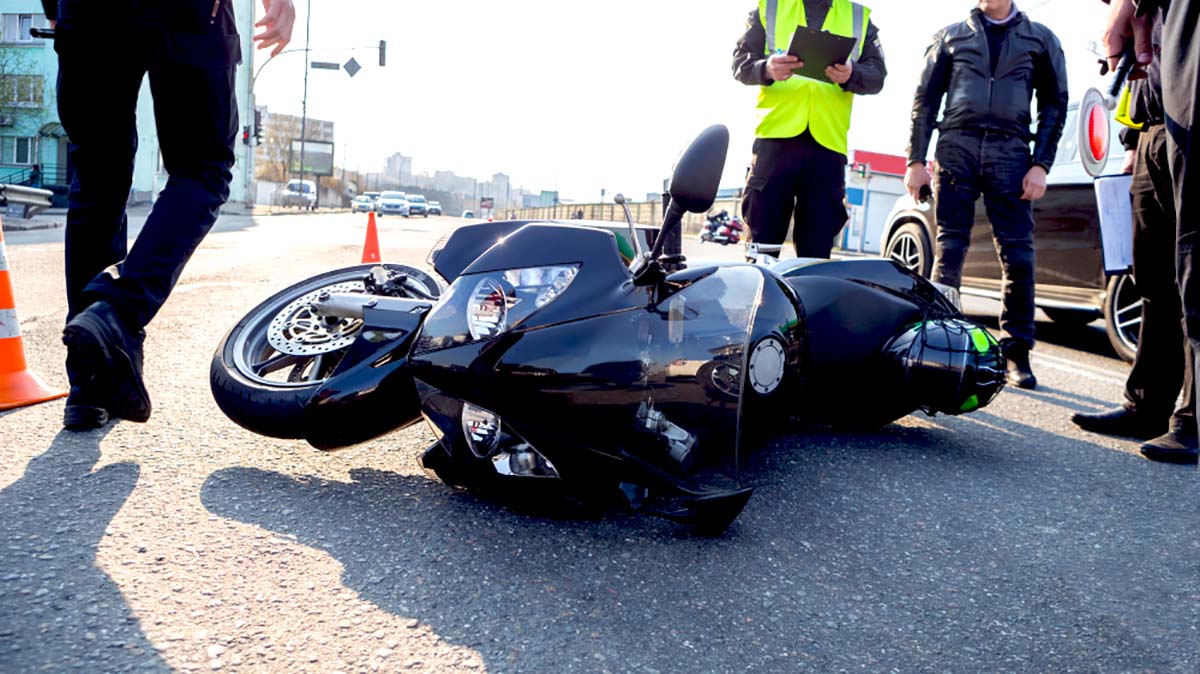
Before getting a motorcycle insurance policy, check with your car insurance provider first to see if they have a multi-vehicle policy you can bundle with your car’s insurance to save money. Also, keep in mind that lower end motorcycles cost less to insure, and as a beginner your first motorcycle shouldn’t be anything too powerful to start with anyway.
Power
Choosing a motorcycle type is important, but you also need to consider how much power the bike you buy packs. While you’re still a “noob” at motorcycle riding, start out with a bike that isn’t too powerful for you to handle. Don’t buy something too heavy or too fast until you’ve mastered how to ride something basic.
NOTE: Motorcycle manufacturers offer multiple power outputs for each model they produce, and it’s good to understand how to read specs. Watch the video above to learn how to read motorcycle spec sheets.
You’ll also need to know what “cc” means when you’re shopping for a bike. CC stands for cubic centimeters, and it identifies the motorcycle’s engine size. For example, a 125cc motorcycle has a smaller engine, while a 1600cc motorcycle has a larger, more powerful engine.
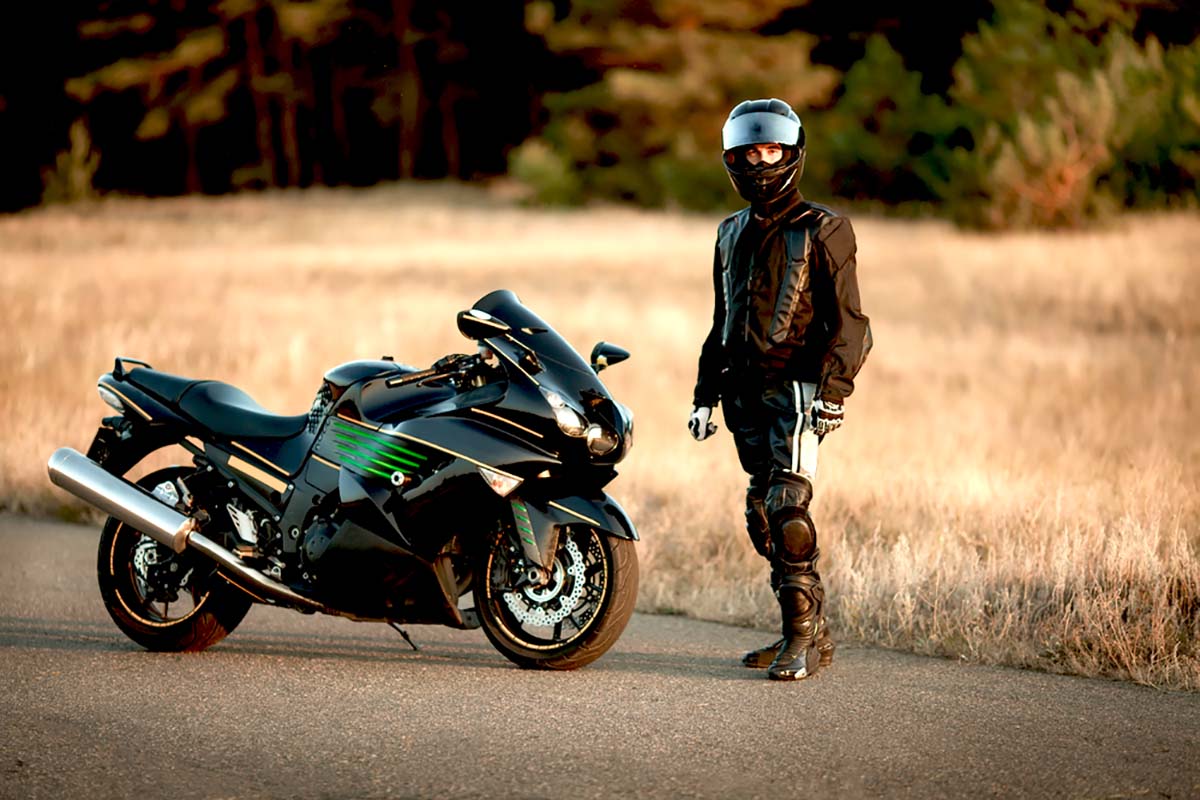
A motorcycle with a cc in the lower range is recommended for new riders, nothing above 600cc. If you’re a larger rider and need a bigger, more powerful machine to suit your comfort level, you can go above 600cc as long as you’re confident handling more power as a beginner.
Weight
The old expression “the bigger they are, the harder they fall” rings especially true for motorcycles. As a beginner, you’ll likely make a lot of mistakes and have to lift up a fallen bike at least once. Different motorcycle styles carry varying weights, so choosing a bike that is relatively lightweight to start out with can help you learn control and achieve comfort.
NOTE: Motorcycles tend to fall over and require strength to lift up. Watch the video above to learn how to lift a fallen motorcycle without hurting yourself.
Other things to consider when buying your first motorcycle include storage capacity, fuel economy, safety features, and whether it’s suitable for long commutes or only for short rides. Don’t rush into buying your first motorcycle. Take your time, do your research, feel out different types, and get something basic you can hone your skills on that you can trade up or customize later once you’ve gained riding experience.
